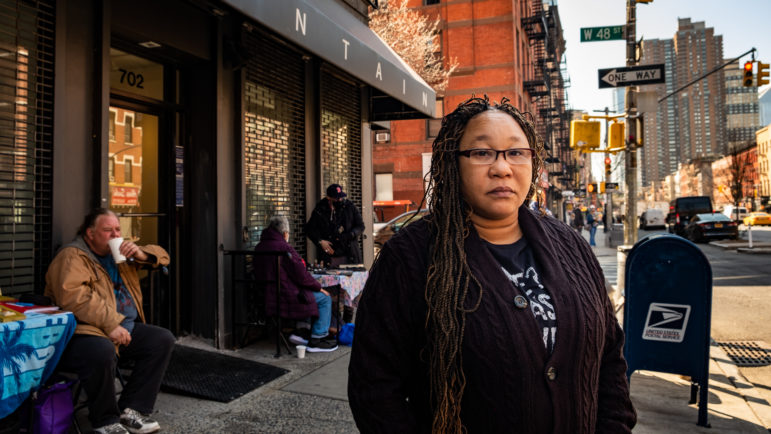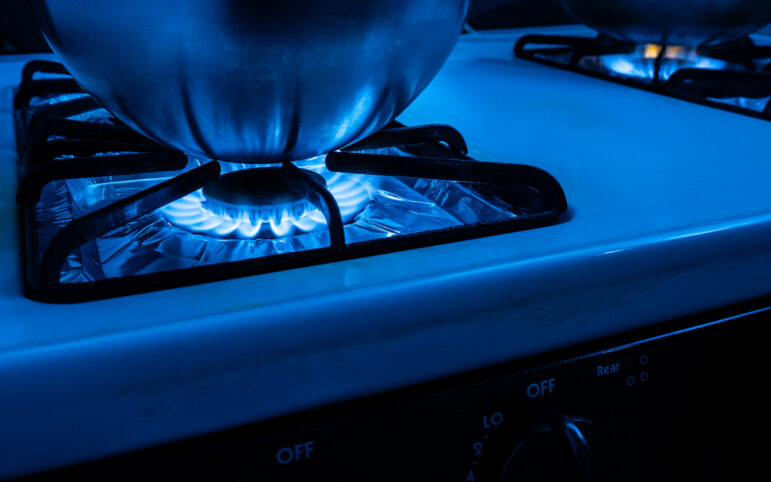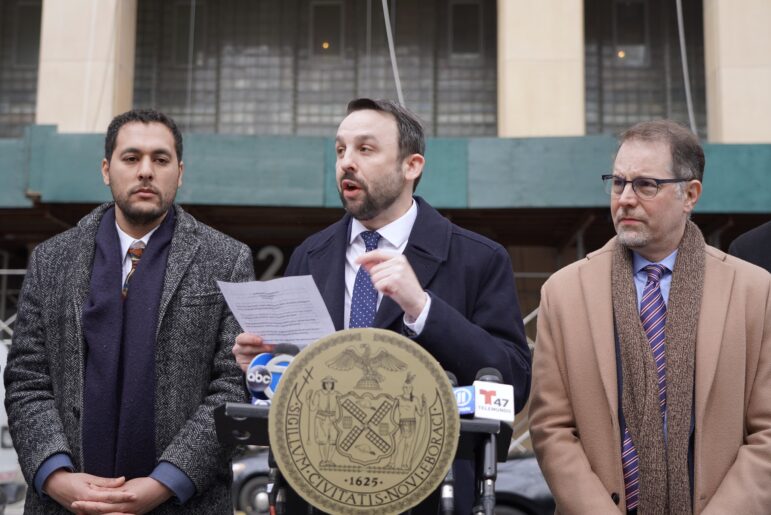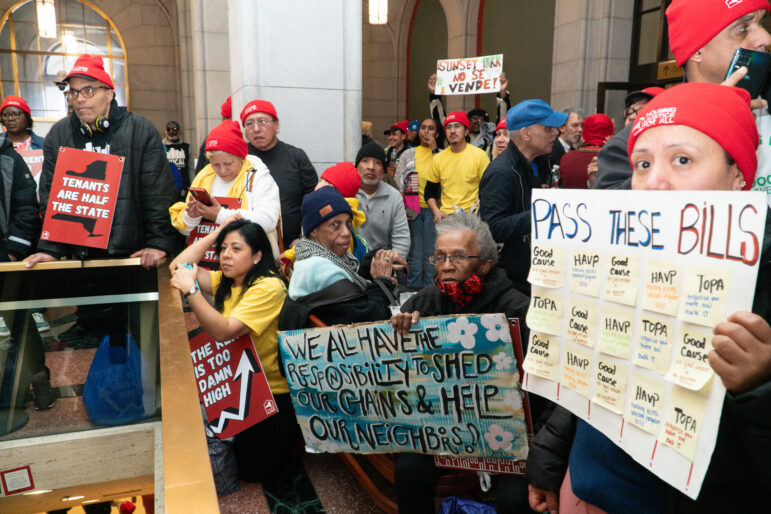For many low-income tenants in unregulated apartments, rents remained relatively flat or even increased during the pandemic because available housing was still hard to find.

Adi Talwar
Bronx native Natosha Sanders has been searching for an apartment that her rental subsidy will cover. “You gotta be a millionaire to live in New York,” she said.A tech worker in the East Village took on a roommate to cover a 30 percent rent hike. A media professional in Williamsburg is biting the bullet and paying a 25 percent rent increase because she can’t find a cheaper place. And in some of Manhattan’s hottest neighborhoods, well documented bidding wars are the latest bonanza for upscale property owners.
Citywide, rents were up 33 percent between January 2021 and January of this year as vacant mid-market and luxury units filled up, and landlords eliminated the concessions meant to lure back wealthier tenants early in the pandemic.
And at the lower end of the market? Rents are rising there, too, even though low-income New Yorkers never saw the vacancy deals that wealthier residents received.
For many low-income tenants in unregulated apartments, rents remained relatively flat or even increased during the pandemic because available housing was still hard to find. State laws prevented most evictions from mid-March 2020 to Jan. 15 of this year, keeping people in their homes while removing a grim driver of available housing for low-income apartment-hunters. At the same time, COVID-19 disproportionately killed low-income New Yorkers, many of whom left empty apartments behind.
For others, asking prices are now rising in relation to inflation and broader market trends, according to tenants, brokers, landlords and analysts. But for renters just struggling to get by, even a modest increase can be a burden or barrier.
“It’s been a nightmare,” said Paris Dickey, a real estate broker who specializes in helping people with rental subsidies land an apartment. “A lot of the apartments that are not rent-stabilized are being jacked up.”
Dickey said one Brooklyn management company sought his advice on whether they could legitimately request $1,900 for a one-bedroom previously priced at $1,775. “I told him, ‘Don’t do that,’” Dickey said. The company did it.
By some measures, rents actually increased throughout the pandemic for the poorest New Yorkers. An annual tenant survey by the Community Service Society (a City Limits funder) found that 43 percent of respondents earning below the federal poverty line reported a rent increase in 2021. Rents decreased for only 7 percent of respondents earning below 200 percent of the federal poverty line, currently $55,500 for a family of four.
“Anecdotally and from the data we do have, it seems like rents for low-income and extremely low-income people didn’t really drop during the pandemic,” said CSS Housing Policy Analyst Oksana Mironova, who authored a report on the survey.
By others, rents are at roughly pre-pandemic levels after some overall decreases. The real estate website StreetEasy separates apartment data into five categories based on price and found that median rents in the lowest quintile dropped from February 2020 to February 2021 before rising once more in Brooklyn, Manhattan and Queens.
In Manhattan, median monthly rents at the lowest end of the market dropped from $2,159 in February 2020 to $1,784 in February 2021 but have since increased to $2,164 in February of this year, according to StreetEasy.
In Brooklyn, median monthly rents in the bottom quintile went from $1,815 in February 2020 to $1,694 in February 2021 to $1,854 in February of this year. And In Queens, the median monthly rent started at $1,645 in February 2020, dropped to $1,539 in February 2021 and returned to $1,650 in February of this year. StreetEasy said it does not have rent data for the lowest quintile in The Bronx and Staten Island.
Making sense of neighborhood trends
Additional analyses suggest that rents have been all over the map in lower-income areas, but that’s only part of the story. City Limits reviewed median asking rents in eight neighborhoods—two in every borough but Staten Island—from March 2019, March 2020, March 2021 and January 2021 using listings data compiled by StreetEasy. Each neighborhood was located in a Community District with one of New York City’s highest poverty rates, according to city data.
The results were all over the board. In Central Harlem, median rents have hovered around $2,500 per month since January 2019. In nearby East Harlem, median monthly rents plummeted from $2,450 in March 2020 to $2,000 in March 2021 before spiking back to $2,400 in January of this year, the most recent StreetEasy data available.
In Brownsville, median rents stayed the same for the first year of the pandemic—$2,000 per month in March 2020 and 2021—but have since dropped to about $1,825. Meanwhile, in neighboring East New York, median monthly rents have surpassed pre-pandemic levels.
Nevertheless, the search for pricing trends is complicated by a lack of reliable data. StreetEasy and other real estate trackers rarely review listings in the lowest-income neighborhoods, especially outside Manhattan. For example, there was no consistent data for Morris Heights or Mount Hope, two neighborhoods located in Bronx Community District 5, home to the city’s highest poverty rate. There were 87 listings in Brownsville for January 2022 compared to 895 in Williamsburg.
And then there’s the severe stratification in some neighborhoods with New York City’s highest rates of poverty. Many, like Harlem, East Harlem, and, increasingly, East New York, also happen to be among the fastest gentrifying, making it hard to determine trends based on median rents.
Tracking rental trends in low-income neighborhoods “is a perpetual challenge,” said Charles McNally, a spokesperson for New York University’s Furman Center, a real estate research group. “Online listings don’t capture that stock and it has been made worse by the data collection obstacles of the early days of COVID.”
The apartment review app OpenIgloo provided some more insight. OpenIgloo analysts compiled a chart of median rents in 11 representative neighborhoods across four of the five boroughs for City Limits from January 2019 to January of this year.
The high-income neighborhoods—Chelsea, Flatiron, the Upper East and West Sides—demonstrate the staggering rent hikes of up to $1,000 per month. Low-income neighborhoods, like Brownsville, and middle-income neighborhoods, including Bay Ridge and Bensonhurst, have seen only modest increases, and at times, decreases since last year, the analysis shows.
“It's not to say these neighborhoods will be shielded from rent increases, but the rent recovery there hasn't been as aggressive compared to others,” said OpenIgloo CEO Allia Mohamed.
‘You gotta be a millionaire to live in NYC’
Hundreds of thousands of low- and middle-income renters are protected from exorbitant rent increases because they live in public housing or rent-stabilized apartments. But about 43 percent of New York City’s nearly 2.2 million rental units were not covered by rent stabilization laws, according to the city’s most recent Housing and Vacancy Survey, completed in 2017.
That leaves them susceptible to abrupt rent increases if the property owner thinks they can get more for an apartment on the open market. The reality has fueled a movement to establish protections against major rent increases without justification, like repair costs, and a right to a lease renewal in most cases. The legislation, known as Good Cause, essentially extends some rent stabilization protections to tenants in non-regulated units, including buildings with fewer than six units, deregulated apartments and homes built after 1974.
“Good Cause would protect 600,000 households from either weird no-fault evictions or from not getting their lease renewed, which would add so much stability for people,” said Mironova, the CSS policy analyst.
But that bill continues to face fierce opposition from landlords and their representatives who say it would limit their ability to raise revenue from their properties and keep up with building expenses—especially after hundreds of thousands of tenants across the state could not manage to keep up with rent during the pandemic.
Jay Martin, the executive director of the landlord group Community Housing Improvement Program, said property owners who have raised rents on lower-income tenants in non-regulated apartments are typically trying to cover oil and property tax increases.
“They’re not gouging their tenants,” Martin said. “They’re trying to meet their higher costs.”
Regardless, the current market isn’t making it any easier for New Yorkers who have been squeezed out of more and more housing.
Bronx native Natosha Sanders has visited five apartments since she received a CityFHEPS housing voucher in late-January with a few more lined up in the coming days. The subsidy from the city would cover rent up to $1,945, including utilities—a hard-fought increase that took effect last year.
But Sanders, who has been living in a Midtown shelter, said she’s having trouble finding a place priced that low—aside from a crummy apartment in Flatbush with a broken elevator, crumbling cabinets and a rotten stench. That was priced at $1,800.
“You just know that was going for $1,300 before,” she said. “But everyone is going through it. You gotta be a millionaire to live in New York.”









2 thoughts on “For Lower-Income New Yorkers, COVID Rents Never Really Went Down”
Median Asking Rents by borough:
01-2022 vs 01-2015 and 01-2022 vs 01-2020
Borough | 01/2015 | 01/2020 | 01/2022 vs 01/2020 | 01/2022 vs 01/2015
Staten Island | $1,600.00 | $1,952.00 | 5.53% | 28.75%
Queens | $2,100.00 | $2,300.00 | 0.00% | 9.52%
Manhattan | $3,200.00 | $3,500.00 | 5.71% | 15.63%
Brooklyn | $2,500.00 | $2,600.00 | 4.69% | 8.88%
Bronx | $1,450.00 | $1,950.00 | 5.13% | 41.38%
NYC | $2,800.00 | $2,900.00 | -0.17% | 3.39%
https://streeteasy.com/blog/data-dashboard/
Regarding the cityfheps vouchers, there is a stigma attached to them, and the actual amount for a single person is not $1945. If the rent doesnt include utilities (which most rentals do not), the value of the voucher is only $1838. Most landlords are intentionally pricing apartments above that amount by a few dollars or much more.